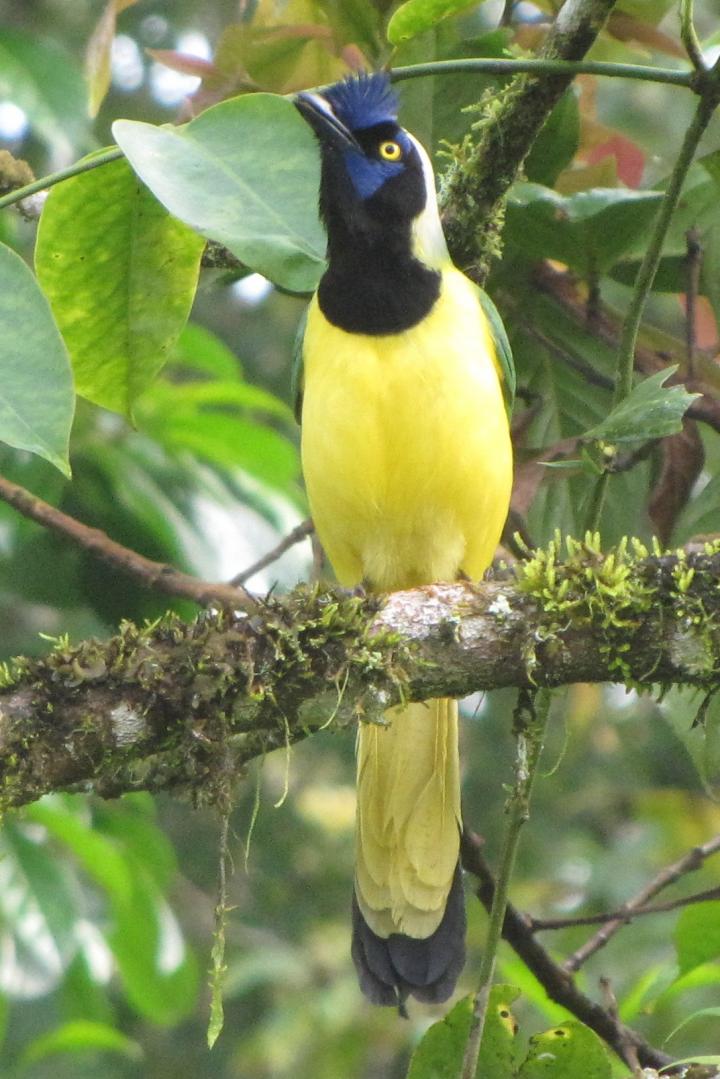
Credit: Professor Stephen Willis
A continental-scale network of conservation sites is likely to remain effective under future climate change scenarios, despite a predicted shift in key species distributions.
New research, led by Durham University and published in the journal Frontiers in Ecology and Evolution, investigates the impacts of potential climate change scenarios on the network of Important Bird and Biodiversity Areas (IBAs) across the Caribbean, and Central and South America.
The research was carried out in collaboration with Senckenberg Biodiversity and Climate Research Centre, BirdLife International and the National Audubon Society.
IBAs are sites identified as being internationally important for the conservation of bird populations, with over 13,000 sites identified across 200 countries in the last 40 years. Many are covered by formal protected areas, while others are conserved by community-managed reserves or indigenous lands.
Two of the principal responses of species to recent climate change events are changes in range and abundance, leading to a global reshuffling of populations.
Range changes may cause species to disappear from areas they occupy, whilst providing them with opportunities to colonise new sites.
This redistribution could affect the ability of international site networks (including protected areas) to conserve species. Therefore, identifying which sites will continue to provide suitable conditions and which are likely to become unsuitable is important for effective conservation planning as our planet continues to warm.
Estimating the impact of climate change on species’ distributions, and the consequences for networks of sites identified to conserve them, can help to inform conservation strategies to ensure that these networks remain effective.
The research modelled the effects of different scenarios of climate change on the wider network.
It determined that, for 73 percent of the 939 species of conservation concern for which IBAs have been identified, more than half of the IBAs in which they currently occur were projected to remain climatically suitable and, for 90 per cent of species, at least a quarter of sites remain suitable.
These results suggest that the network will remain robust under climate change. What is concerning however, is that seven percent of the species of conservation concern are projected to have no suitable climate in the IBAs currently identified for them.”
Professor Stephen Willis, Director of Research in the Durham University Department of Biosciences said “The Caribbean and Central and South American region supports about 40% of all the bird species of the world, so this network is vital for a large proportion of the world’s birds.
To develop realistic predictions of future changes, we not only considered where suitable climate will occur for species in future but also the likelihood of species dispersing to newly suitable sites.
This information is helping to identify potential management strategies across the IBA network.”
Stuart Butchart, Chief Scientist at BirdLife International and a co-author on the study, said: “These results highlight how critical it is to effectively conserve the network of Important Bird and Biodiversity Areas across the Americas in order to help safeguard birds in the region under climate change.
“Despite projections of significant shifts in the distributions of individual species, the network as a whole will continue to play a key role in future conservation efforts.”
Aurelio Ramos, Senior VP, Audubon International Alliances Program said “Applying this science to secure and strengthen IBAs in the Americas is essential to support the future of birds and people. Audubon, BirdLife International, American Bird Conservancy and REDLAC have partnered in the Americas on a project to strengthen protection of Climate secure IBAs identified in the research called Conserva Aves”
Alke Voskamp of the Senckenberg Biodiversity and Climate Research Centre added “The results of this study highlight the importance of a network-wide perspective when making conservation management decisions for individual sites when planning for climate change.”
The researchers note that designating protected areas to safeguard biodiversity is a cornerstone of species conservation and the importance of considering local environmental management decisions and their impacts on wider, global conservation networks has never been more relevant.
###
MEDIA INFORMATION
For further information please contact Professor Stephen G Willis at +44 (0) 191 33 41379 or email at [email protected]
Alternatively, please contact Durham University Marketing and Communications Office on [email protected]
Source information
Site-Based Conservation of Terrestrial Bird Species in the Caribbean and Central and South America Under Climate Change: http://journal.
PHOTOS
Available through this Dropbox link: https:/
Credit – Professor Stephen Willis
Useful web links
Professor Stephen Willis’ profile: https:/
Dr. Stuart Butchart’s profile: https:/
Alke Voskamp’s profile: https:/
About Durham University
Durham University is a globally outstanding centre of teaching and research based in historic Durham City in the UK.
We are a collegiate university committed to inspiring our people to do outstanding things at Durham and in the world.
We conduct boundary-breaking research that improves lives globally and we are ranked as a world top 100 university with an international reputation in research and education (QS World University Rankings 2021).
We are a member of the Russell Group of leading research-intensive UK universities and we are consistently ranked as a top 10 university in national league tables (Times and Sunday Times Good University Guide, Guardian University Guide and The Complete University Guide).
For more information about Durham University visit: http://www.
END OF MEDIA RELEASE: Issued by Durham University Marketing and Communications Office – http://www.
Media Contact
Robert Steven Hanley
[email protected]
Original Source
http://links.
Related Journal Article
http://dx.




